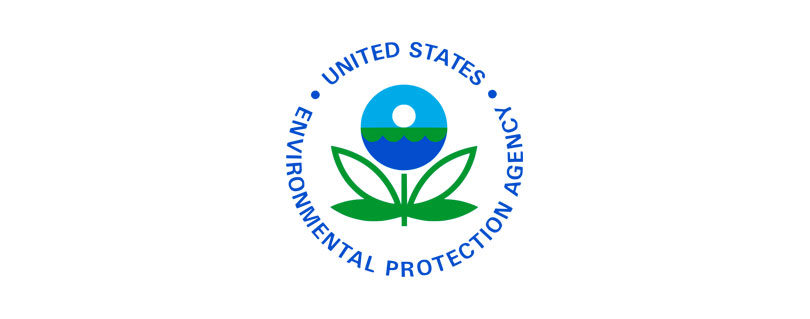EPA Launches New Initiative to Accelerate Lead Pipe Replacement to Protect Underserved Communities in Wisconsin
Publilshed by the U.S. Environmental Protection Agency (EPA)
WASHINGTON (January 27, 2023) – Today, EPA announced a major new initiative to accelerate progress toward the Biden-Harris Administration’s goal of achieving 100% lead service line removal and replacement. The “Lead Service Line Replacement Accelerators” initiative was introduced during a White House convening with Vice President Kamala Harris and EPA Administrator Michael S. Regan, alongside state and local leaders celebrating the one-year anniversary of the Lead Pipe and Paint Action Plan. The new Accelerator will provide targeted technical assistance services to help underserved communities in Wisconsin access funds from President Biden’s Bipartisan Infrastructure Law and replace lead pipes that pose risks to the health of children and families. The initiative is a partnership with the Department of Labor, Connecticut, Pennsylvania, New Jersey, and Wisconsin and will work with 40 communities across those states in 2023.
“The science is clear—there is no safe level of exposure to lead,” said EPA Administrator Michael S. Regan. “EPA is committed to partnering with states and communities to protect children and families and ensure our nation’s drinking water pipes are lead-free. Our Lead Service Line Replacement Accelerators demonstrate our commitment to ensuring every community has access to safe, clean drinking water. By leveraging the historic investment made possible by the Bipartisan Infrastructure Law, we are moving one step closer to achieving President Biden’s vision of 100% lead-free water systems for all.”
Through the Lead Service Line Replacement (LSLR) Accelerators, EPA will provide hands-on support to guide communities through the process of lead service line removals, from start to finish. This will include support in developing lead service line replacement plans, conducting inventories to identify lead pipes, increasing community outreach and education efforts, and supporting applications for Bipartisan Infrastructure Law funding. As a result, more communities will be able to access their fair share of federal funds to secure a lead-free future.
Partnership is core to the LSLR Accelerators initiative. EPA will collaborate each step of the way with Wisconsin and applauds their leadership in seeking innovative new ways to accelerate lead pipe removal. The Accelerators initiative will support Wisconsin in more strategically deploying funding from the Bipartisan Infrastructure Law (BIL) for lead service line replacements while developing best practices and creative approaches that can serve as a roadmap for the rest of the country. As this program moves forward, EPA and the Department of Labor will collaborate to provide tools aimed at increasing job quality standards, equity, and resources to accelerate the development of the skilled water workforce needed to undertake these community and system-wide lead service line replacement programs.
“Every Wisconsinite deserves access to safe, clean drinking water. We’ve been working to address the lead crisis and other water quality issues affecting our state since Day One of my administration—from declaring 2019 the Year of Clean Drinking Water to our ongoing work with the EPA to replace lead service lines across our state,” said Wisconsin Governor Tony Evers. “The Biden Administration and the EPA have been critical partners in these efforts. I look forward to continuing our work together to ensure Wisconsinites can trust the water coming from their taps.”
“With its dedicated funding for lead pipe replacement, the Bipartisan Infrastructure Law will help remove this toxin from homes and from our communities. I am proud to have supported legislation that takes action on this pressing crisis in Milwaukee,” said U.S. Rep. Gwen Moore. “I am glad that the EPA will work with our state to reach affected communities in Wisconsin and help identify where the lead laterals are in order to expedite the process of removing these pipes. This new initiative will help ensure that affected and under-resourced communities can access tools and information they need to finally get these pipes out of the ground and soon. ”
The LSLR Accelerators initiative represents another step forward by the Biden-Harris Administration to achieve 100% lead free water systems. President Biden’s Bipartisan Infrastructure Law invested an unprecedented $50 billion in the nation’s water and wastewater infrastructure, including $15 billion dedicated to lead service line replacement and $11.7 billion of general Drinking Water State Revolving Funds that can also be used for lead service line replacement. And in 2021, with the boost from these water infrastructure investments, the Biden-Harris Administration released its Lead Pipe and Paint Action Plan. EPA is committed to this work and using every tool available— statutory authority under the Safe Drinking Water Act, technical assistance, funding for lead service line replacement, and more—to protect all Americans from lead in drinking water.
With the help of Bipartisan Infrastructure Law funding, EPA is strengthening its technical assistance efforts in order to ensure every community gets its fair share of this historic investment. For more information about water technical assistance for communities and the Lead Service Line Replacement Accelerators, please visit: https://www.epa.gov/water-infrastructure/water-technical-assistance
Background
All communities deserve access to safe, clean, lead-free water. Yet too many families and children across America are still impacted by lead pipes. The science is clear that lead pipes pose serious health risks, particularly for children. However, many communities, particularly underserved communities and communities in rural and inner urban areas, lack necessary tools and resources to make rapid progress on lead service line replacement.
The primary source of lead in drinking water, when present, is pipes. Lead can be harmful to human health even at low exposure levels and can accumulate in the body over time. In children, low levels of exposure have been linked to damage to the central and peripheral nervous system, learning disabilities, shorter stature, impaired hearing, and impaired formation and function of blood cells.
Read the full article at: https://www.epa.gov/newsreleases/epa-launches-new-initiative-accelerate-lead-pipe-replacement-protect-underserved-0




